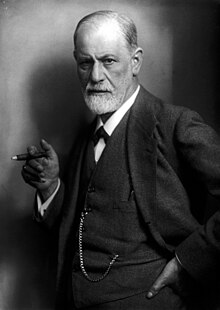Defensive communication
[3] Sigmund Freud was one of the first scientists to research the subject of defensive communication in depth, during his development of psychodynamic theory.
[4] Freud and his colleagues believed that internal emotions such as anxiety, guilt, and insecurities created defensive reactionary behaviors.
[2][4] Psychodynamic theorists also believe defensiveness is a reactionary response to protect oneself from external threats.
The supportive behaviors, in contrast, include description, problem orientation, spontaneity, empathy, equality, and provisionalism.
[4] Defensive communication is a relational construct (a subjective worldview) that arises as a result of internal individual perceptions.
[3] Children raised in atmospheres with high defensiveness and low amounts of supportive communication tend to develop aggressive behaviors.
A central criticism of defensive communication is the lack of empirical research supporting Gibb’s initial paper on the topic.
[9] Gibb’s paper on the climate conceptualization of defensiveness was not a scientific study and did not allow other researchers to replicate or test his hypothesis.

